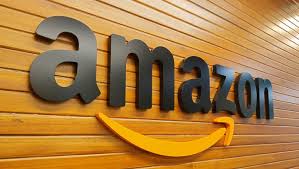Behind FedEx’s Strategic Decision to Leave Amazon at the Curb

FedEx has decided to turn its truck around and drive away from Amazon.
News Wednesday that FedEx Ground wouldn’t renew its delivery contract with the e-commerce giant wasn’t a great surprise to market watchers. But it was significant.
Amazon’s ever growing demands, its developing position as a competitor, and low margins for delivery work were all factors, analyst say.
The delivery and logistics company had already announced its plan to end domestic express delivery for Amazon on June 7. The reasoning then was similar to the statement from FedEx Wednesday that “[t]his change is consistent with our strategy to focus on the broader e-commerce market.”
Amazon had its own spin in a statement: “We are constantly innovating to improve the carrier experience and sometimes that means reevaluating our carrier relationships.”
As Morgan Stanley noted in a statement on Wednesday, “this would have been unthinkable 5-7 years ago when eCommerce growth was the main investment thesis for FDX/UPS.” But things have been changing and the interests of the two companies no longer closely match.
Amazon gets too big for anyone
Amazon’s massive size coupled with continued growth—driven by third-party sellers using Amazon Marketplace and representing 58% of the company’s physical gross merchandise sales in 2018, according to financial filings—has turned its transportation costs into a strategic and fiscal nightmare.
“In 2015 [Amazon] spent $ 11.1 billion [on transportation],” said Helane Becker, managing director, industrials/consumer-airlines at Cowen. “In 2017 they spent 27.7 billion. If you extrapolate that out, in five years you’re spending $ 85 billion in transportation and, if you’re Amazon, you have to worry. It’s been 12% of revenue and growing.”
In comparison, FedEx’s total revenue for the 2019 fiscal year that ended in May was $ 68.7 billion. UPS saw $ 71.9 billion in 2018. Amazon is quickly outstripping the ability of any carrier to comfortably handle its business. “If you’re FedEx and UPS, you either make the choice to scale with them and dwarf all of your other business in the long term [or leave],” Becker said. “And FedEx and UPS said they’re not going to scale out to do that.”
Amazon has been building out its own delivery and transportation network, a demanding challenge. Cowen estimates that FedEx and UPS together have about 1,300 aircraft, thousands of facilities, and more than 750,000 employees. Amazon, on the other hand, should reach 50 aircraft by the end of this year, between 65 and 70 in 2020, ultimately needing 200 planes within seven years. That is a lot of investment.
The profits weren’t there
While 200 planes would be 15% of the combined UPS and FedEx fleets, the money the delivery companies have seen has been small in comparison. FedEx, for example, has previously said that Amazon represented 1.3% of its revenues before the June announcement of the express contract’s end, according to Morgan Stanley. If UPS had a similar volume, that would suggest a high cost to maintain service.
“We think it’s likely [FedEx] considers its Amazon business to be insufficiently remunerative to continue,” said Keith Schoonmaker, director of industrials equity research at Morningstar Research Services. “Surely no customer qualifies for a bigger discount than Amazon. Combine that with delivery to residences that is more costly than delivery to businesses [and] it’s not the most attractive business in the world. If it was super lucrative, I don’t think they’d walk away from it.”
Furthermore, according to analysts, Amazon has been working on its own local delivery networks that would eventually be offered as a service to other companies, similarly as it has done with warehousing, online sales, and cloud capabilities. As the company mentioned in its latest annual report, it considers as competitors “companies that provide fulfillment and logistics services for themselves or for third parties, whether online or offline.”
“The best way to describe it is Amazon is a FedEx competitor,” Becker said. “Would FedEx deliver for UPS?”
Amazon has focused its own deliveries on high-density urban areas that allow more efficient costs, leaving the costliest types to FedEx and UPS, further driving down their margins.
“Why go to Rockford for a couple of packages if you can stay in downtown Chicago?” Schoonmaker said. “You can deliver every 20 feet. You have a denser network and much more revenue per mile driven.”
Effectively, both UPS and FedEx have been subsidizing Amazon’s delivery needs while the e-commerce firm works to establish itself as a viable competitor to them.
Short-term implications
For FedEx, the immediate implications may not be so large. According to Morningstar, 80% of FedEx’s business volume from Amazon was in the express deliveries that are already phased out. That would leave about 0.26% of its revenue left attributable to Amazon—not so large a blow.
In addition, dropping Amazon opens resources for other business directions. “It is launching Sunday deliver at the beginning of next year and needs the extra capacity, which Amazon was taking up,” said Scott Freeman, an investment advisor with Criterion Capital Advisors, which owns FedEx stock on behalf of its clients.
However, there are some negative implications. “This will cost FedEx in the short term as the Amazon package volume comes out of their fixed cost system,” said Nic Fahri, partner at strategy consulting firm OC&C Strategy Consultants. “Timing it around the holiday season peak will mitigate that effect until 2020.”
Still, FedEx is getting hit by investors, with shares down 1% on Wednesday at 2 p.m. because “people are worried about the entry of a new competitor,” Schoonmaker said.
UPS has been picking up business that FedEx walked away from. “We saw massive growth in UPS’s rapid deliveries last quarter,” after FedEx dropped Amazon, Schoonmaker said. “More of that will likely happen.”
The decision may also have boosted UPS’s negotiating position with Amazon. “The exit of FedEx strengthens UPS’s and USPS’s hand in the short term,” Fahri said. “In the long term though, they face a decision: are they with Amazon, or against them? That’s a tough call.”
As for Amazon, as FedEx drives away, it will be forced to decide how much it is willing to—or has to—spend to make up for all those trucks, planes, and personnel it’s been leveraging to bring the books, bacon, and other assorted boxes home.
More must-read stories from Fortune:
—What people get wrong about artificial intelligence and China
—Will Apple will absorb tariffs on Chinese-made products?
—Is it “only human” to feel anxious about money? Talking finance with Sophia the Robot
—The currency that’s quietly emerged as Asia’s safest bet
—Listen to our audio briefing, Fortune 500 Daily



